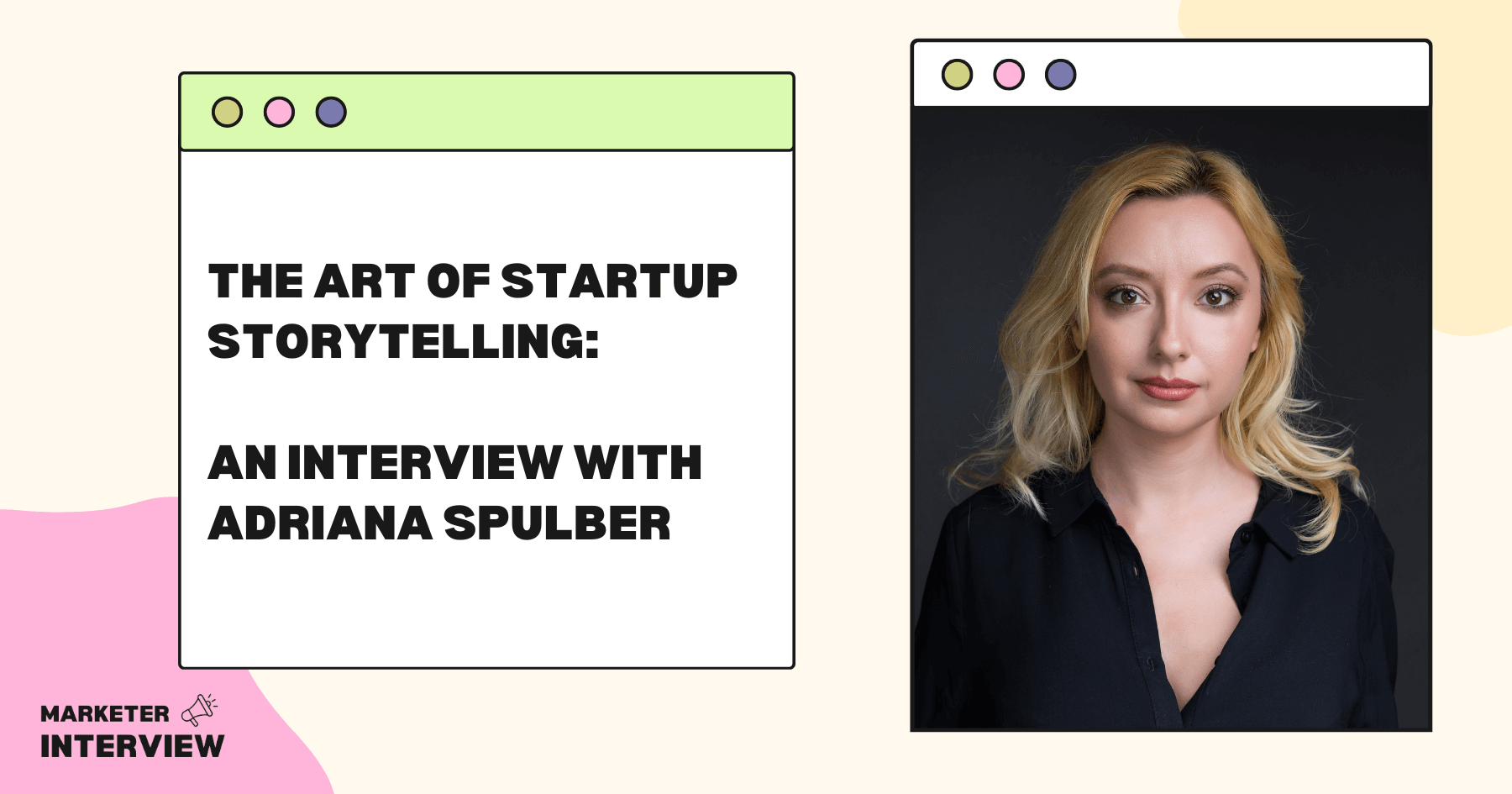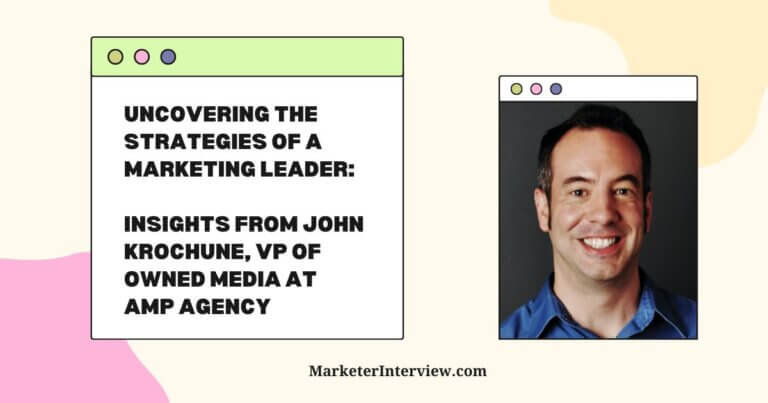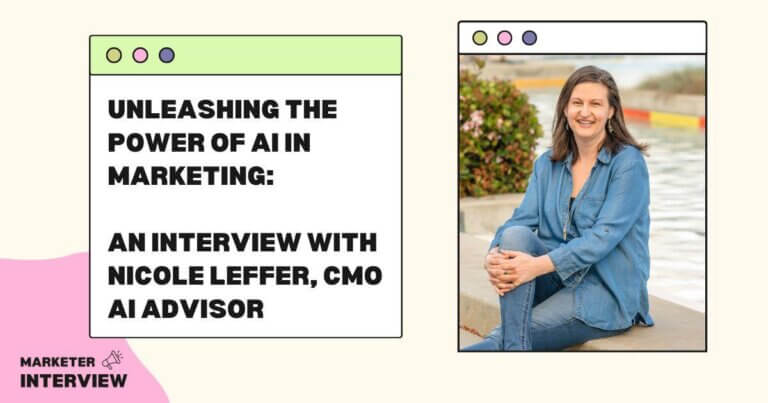The Art of Startup Storytelling: An Interview with Adriana Spulber
Welcome to Marketer Interview, where we sit with extraordinary marketing minds shaping the industry.
Today, we enjoyed talking to Adriana Spulber, the Head of Communications at Underline Ventures.
While never leaving the tech world, Adriana’s journey from law to design and finance is a testament to her versatile expertise.
Join us as we explore deeper into Adriana’s career, her insights on startup storytelling, and the tools she employs to drive success in her role.
Contents
- 1 Your professional journey has been remarkably diverse, from law to design and finance. How did your experiences in these fields eventually lead you to specialize in marketing and communications for startups?
- 2 Your recent article focused on “The Missing Piece” in the journey of CEE startups, emphasizing storytelling and product positioning. What inspired you to explore this subject, and what key takeaways would you like founders to grasp from your insights?
- 3 Startup storytelling can be a powerful tool. Could you share an instance where a compelling narrative made a significant impact on a startup’s success and how you played a role in shaping that story?
- 4 As the Head of Communications at Underline Ventures, what strategies do you employ to ensure consistent and effective internal and external communication?
- 5 Founders often face challenges in articulating their unique value proposition. How do you guide them in refining their message to resonate with their target audience?
- 6 In the ever-changing world of startups, how do you stay up-to-date with the latest marketing trends and storytelling techniques to maintain a competitive edge?
- 7 Startups usually operate with limited resources. What cost-effective marketing initiatives have you found most impactful in creating brand awareness and driving growth?
- 8 Your background in design and finance adds a unique perspective to your role. How has this multidisciplinary expertise influenced your approach to marketing and communications?
- 9 Building a solid brand presence is crucial for startups. How do you ensure brand consistency across various channels and touchpoints?
- 10 Collaboration is vital in startup environments. How do you foster strong partnerships with other teams, such as product development and sales, to create a cohesive brand narrative?
- 11 Tools and software can significantly streamline marketing efforts. Could you share some essential tools you rely on to craft compelling content and measure its impact?
Your professional journey has been remarkably diverse, from law to design and finance. How did your experiences in these fields eventually lead you to specialize in marketing and communications for startups?
I’ve always put a creative spin on everything I did, whether it was a legal document I wrote or an audit process I followed.
Law and finance gave me structure and the ability to work with numbers. The design gave me an out-of-the-box perspective on what I said or wrote. But all three gave me a solution-oriented approach to everything I’m doing.
And I was always hungry for everything new and techy. I needed to see how technology can and will change our lives, so I waited to join the tech bandwagon at the perfect time. I started with “Tech for Good,” or civic tech, and joined Code for Romania in 2016 as a volunteer, copywriting and then doing what I found to be social media.
There, I learned online communication and crisis management by being in contexts and situations that required these skills. I still can’t believe how I got to experience the civic tech community and the projects like those for election observation, COVID-19, or refugees that changed Romanian society forever. And I’m thanking Olivia Vereha and everyone at Code for Romania for allowing me to learn by doing and making a mark.
After stints at some not-so-successful startups and part-time gigs as a contributing writer, I joined 2019 the How to Web team and finally met startups, founders, and operators building great products and growing the tech ecosystem in CEE. I want to thank Bogdan Iordache and my former colleagues at How to Web for keeping up with me and my (sometimes too experimental) ideas.
My instincts and hacker mentality helped me change a little (I hope) how a CEE tech conference should communicate. Then, I joined a fintech startup (Pago) as their first marketing manager and applied many things I’ve read and heard during my How to Web time.
When Bogdan asked me back in 2021 to join a VC fund he was planning to launch, the impostor syndrome hit me again. Still, I couldn’t say no, so the geek in me started researching how the top VCs in the world communicate, and here I am, trying my best to help our portfolio founders communicate better and put the Underline Ventures name out there. Underline VC success is our portfolio success.
Your recent article focused on “The Missing Piece” in the journey of CEE startups, emphasizing storytelling and product positioning. What inspired you to explore this subject, and what key takeaways would you like founders to grasp from your insights?
In CEE, startup storytelling and product positioning are misunderstood, and I wanted to discuss that. We have founders who talk too much about them rather than their product or too much about the technology and not their users. This stems from our product-building obsession, reminiscing from decades of outsourcing tech to big companies.
“You can’t cover a lack of founder-market fit or product-market fit later with stories. No amount of storytelling can help or cover a bad product or business. Not even being a good storyteller. (…) Show, don’t just tell!” But do listen more! Listen to your users, team, investors, and advisors.

While working at Pago as their marketing manager, we had an acquisition campaign supported by VISA. I also had KPIs like increasing the app’s payment numbers and values.
As our first major campaign, we opted for a well-thought storyline the creative agency Sector 7 helped us with, consisting of a 4-episode series about the story of a king trying to pay his bills in 1512 without our app. It might seem a lot for 4 video ads, but we wanted to have the space to explain our product and features as detailed as possible, as I saw this campaign as our business card.
We also needed a main character that clicked with anyone who might use the app in Romania, at any age or background, so we chose a medieval king called Vodă (how the medieval kings were called in Romania). Anyone knew how this medieval king was supposed to look from movies and history books, and we just made him have modern, online payment challenges.
We also had peasants in 2 of those episodes, antagonistic to Vodă. This way, writing the story for literally everyone. The creative agency put a funny spin on the story, and we made sure the distribution channels were the right ones (after 3 weeks on TV, I asked to take the ad off it and place our bets only on digital outdoor ads and social media ads, betting on YouTube and high-return platforms like Reddit).
It worked, and besides gaining users, transactions in the app went up by more than 30%, so we got the right users and activated the previous ones, too. We even got a Romanian Effie Award in 2022 in the Marketing Disruptors category that year, making us the only startup that got an award that year and one of the few ever (Effies are known as the Oscars of advertising with large companies like banks, FMCG, fashion brands, etc. winning every year).
So, create a story that almost everybody understands and then choose the proper channels to tell this story on. Don’t forget to maximize the content by using every bit of the story in visuals, videos, and copywriting and adapting it for every advertising platform your users might be on.
As the Head of Communications at Underline Ventures, what strategies do you employ to ensure consistent and effective internal and external communication?
I don’t have “strategies”. I’m only doing what I feel brings value from my experience with startups.
Internally, I listen as much as I can to my teammates and our portfolio founders. This way, I’m ensuring I help everyone with what they need from me, and our VC platform adds value to our startups.
Externally, I try to read a lot and be as up-to-date as possible on everything that happens in the VC and startup world to offer our followers a knowledge-first platform, not a “VC bragging” one.
Founders often face challenges in articulating their unique value proposition. How do you guide them in refining their message to resonate with their target audience?
It may sound funny, but if I do not understand what their product does, I’m always asking them to go back to the drawing board and explain it or even ask them to do more customer interviews to find out their UVP.
Also, I particularly dislike technical words in product messages. It might be my B2C background, but something is off if you can’t explain to me in plain words what your product does.
Often, if you have difficulties explaining your product offer, your target audience is the wrong one, or even the business model.
In the ever-changing world of startups, how do you stay up-to-date with the latest marketing trends and storytelling techniques to maintain a competitive edge?
I’m not following trends. I’m following marketing principles. Following a shiny trend while writing a GTM plan might backfire big time. In this fast-paced world, you might discover the world has moved to something else when the product is launched.
Of course, I read about trends, but I try not to make decisions based solely on those when planning an announcement or a product launch. There are exceptions like Mistral or Hopin, but those shouldn’t be the norm.
We are in revenue generation, so we need to do things that generate revenue. And a good story sales. But what makes a good story is knowing who clicks with it, so know your potential customer first. Write the story after. That can put you in front of your competitors like no other.

Startups usually operate with limited resources. What cost-effective marketing initiatives have you found most impactful in creating brand awareness and driving growth?
Create your ICP (ideal customer profile) and customer segmentation, and learn as much as you can about your users by speaking directly to them. Then, use what you found out to create something that benefits them repeatedly.
Be everywhere they might be (e.g., if your users watch sports on TV, run TV ads about your product) and give them what they want (e.g., if your users are interested in secure payments, guarantee that their transactions are safe and encrypted).
Your background in design and finance adds a unique perspective to your role. How has this multidisciplinary expertise influenced your approach to marketing and communications?
My finance background made me understand numbers and my actions’ impact on the business. Marketing without a business strategy is nothing. And vice versa because sales need leads.
My design background helped me search for solutions and provoke the status quo. I’m always wondering if something I’m doing can be done faster, better, or in some other way than everybody else.
Building a solid brand presence is crucial for startups. How do you ensure brand consistency across various channels and touchpoints?
I can only talk about building a brand for early-stage startups, pre-seed and seed to series A, as that is an area I have experience in. And at the earliest stages, startups don’t need a brand. They need a good product people will use.
I’m seeing a “trend” in talking about branding for early-stage startups. Some think building a brand can help traction, but I think you need a good product that will speak for itself. Startups at this stage don’t have the time and money to build a brand.
Tell the story of your tech product, not yourself. Speak about why you’re building the product and for whom. That should be your only “brand” storytelling.
Collaboration is vital in startup environments. How do you foster strong partnerships with other teams, such as product development and sales, to create a cohesive brand narrative?
Brand narrative in startups in the earliest stages should start from the founders. The founder’s job is to disseminate information about their product (why, how, what) to their startup team. If the founder knows what they want and has an idea of how they might get there, then the team can work together and make the founder’s vision come alive.
I can give you a list of marketing tools, but you can get them from the other interviewees here. Instead, nothing is possible in marketing without transparency and collaboration.
Marketing teams need to touch points with everyone, from sales to engineering. So you need collaboration tools like Slack, Asana, Jira, Figma, and Google Drive, just to name a few. Your impact is measured first and foremost in how well the other functions in a startup (product design, customer support, sales, engineering, and even recruitment*) understand what marketing does and how fast you can achieve your business goals.
*because a startup cannot grow its team without strong employer branding






